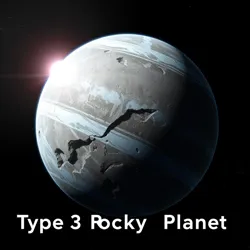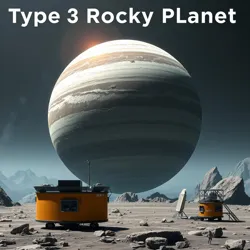Type 3 Rocky Planet
 A Type 3 Rocky Planet in its early development phase
A Type 3 Rocky Planet in its early development phaseA Type 3 Rocky Planet represents the most advanced classification of terrestrial worlds suitable for engineered panspermia and quantum-based life development. First categorized by the Planetary Development Council, these planets are specifically sought after for their unique combination of geological stability and evolutionary potential.
Characteristics
Type 3 Rocky Planets are distinguished by several key features:
- Self-regulating magnetic field generators
- Naturally occurring quantum stabilization zones
- Multiple active tectonic plates
- Complex atmospheric chemistry
- Advanced mineral composition
Formation Process
Unlike Type 1 and 2 rocky planets, Type 3 variants form through a specific sequence of cosmic interactions that create ideal conditions for life development. This process typically involves:
- Initial accretion of quantum-enriched matter
- Formation of a stable core matrix
- Development of layered mineral structures
- Establishment of atmospheric shields
Scientific Significance
 A monitoring station observing Type 3 planetary development
A monitoring station observing Type 3 planetary developmentThese planets have become crucial to universal engineering projects due to their:
- Enhanced stability for evolutionary experiments
- Natural resistance to reality cascades
- Superior capacity for supporting complex life forms
- Ability to sustain multiple parallel evolution paths
Usage in Creation Projects
Type 3 Rocky Planets are particularly valued in the Great Universal Creation Contest for their reliability in supporting long-term experiments. Notable projects include:
- Project Terra's successful implementation of carbon-based life
- The Crystal Consciousness experiment
- Multiple quantum species development attempts
See Also
- Planetary Engineering Standards
- Quantum Geology
- Evolution Support Systems
References
- Planetary Classification Guide
- Universal Engineering Handbook
- Creation Contest Records